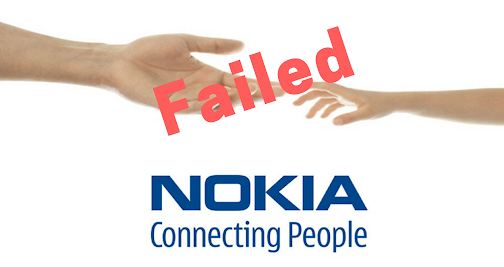Introduction
Nokia once was a leader in global smartphone market but it started to lose the market share to Apple, Samsung, and Huawei gradually after 2006. This article explains why Nokia failed.
Reasons why Nokia Failed?

Emphasizing on hardwire more than software
An important reason explaining why Nokia failed is the lack of emphasis on software development. Nokia was one of the best mobile manufacturers globally in around 2000s and their profit level was sky-rocking in that period. They always focused on the hardware of their mobiles to make them highly fashionable in look and largely ignored the fact of software (Bouwman et al., 2014). Nokia thought that they will be able to hold on their charm on customers by presenting mobiles with highly fashionable accessories. Engineers of the company invented these highly invented mobile designs but forgot to focus on the software and apps which are the mainstay of mobile phones. Competitors (such as Samsung, Apple, Huawei etc.) of Nokia have offered mobiles with latest software and apps; therefore customers have lost their charm on the fashionable mobiles of Nokia. As a result, Nokia lost their customers & market share globally. They could hold on their customers globally by developing software and apps of their mobiles besides developing fashionable mobile designs.
Nokia was not customer focused
Secondly, another potential reason explaining why Nokia failed is that the company did not focus on the needs of the customers. Nokia just emphasized on their profit level, therefore stayed on their old technology and did not try to be updated according to customers’ demand (The Guardian, 2013). They did not pay attention on the increasing expectation of customers in mobile industry. On the other hand, competitors of the company was customer focused and found the requirements of customers, therefore increases the apps’ compatibility of mobiles and provided color film to capture better photograph. Customers got attracted to the firms who served latest technology mobile facilities to make their life better. As a result, the company started to lose customers. Nokia’s reluctance to be customer focused compelled customers to switch to their competitors to fulfill their demand for technology. Nokia could find out the requirement of their global customers and bring innovation to their mobiles in order to become customers’ top choice same as before rather than losing them.
You may also be interested in: PESTLE analysis of Vodafone Porter’s Five Forces model of Vodafone Strategic planning for Vodafone Marketing strategies of Uber
They went ahead too slowly than their competitors
Thirdly, an important reason answering why Nokia failed is that the company moved too slowly compared to its competitors (Alibage and Weber, 2018). Mobile industry is one of the most dynamic and fastest moving industries where all innovation are momentary and lasts until new innovation comes forward. Nokia did not try to adjust with the changing speed of the global mobile industry. Competitors began to transfer their smartphone generations, on the other hand Nokia did not move to the next generation of smartphone. Nokia decided to enter in Android sector very late from their competitors. As a result, competitors went ahead on smartphone transfer process to next generation and it took their customers’ of Nokia away from them. They invented digital photography but became unable to update the camera. Nokia could have decided to adopt Android as their operating system during the time when the technology arrived and researched more on product penetration to survive in global mobile industry.
Only upper management of the company took decision on important issues
Fourthly, not engaging the employees of mid-level and lower level is an important reason explaining why Nokia failed. Top management of Nokia took all the decision for the company keeping the subordinates at darkness (Bhalodiya and Sagotia, 2018). Market research department of the company warned the upper management about the digital transformation of mobile industry but they did not pay heed to the information. As a result, they failed in the sector of innovation and became backbencher of mobile industry. If the upper management would have took account of the advice of market research team, it would have been successful to digitalize the mobiles. It would help the company to survive in the platform of mobile digitalization but management did not consider advice from market research development.
Standardized approach of marketing strategy
Nokia used standardized promotion in international marketing and deliver the same marketing message across the whole world. The company did not deliver compatible marketing message to the countries they provided service. Customers were unable to identify the uniqueness of Nokia because of the sameness in promotion. Competitors claimed themselves as top manufacturer and customers’ received the marketing message positively. Nokia just invested on Television advertisement which did not work out and increased promotion of Nokia with no result. As a result, their slogan ‘Connecting people’ failed to hold its influence and customers of the company went away from Nokia. The company could choose adaptation promotion strategy to promote their mobiles according to the customers, their culture and other factors of host country.

[…] You might also find this interesting:Why Nokia Failed? […]
[…] an entrepreneur, you might be interested in: Why Nokia Failed Marketing strategies of […]